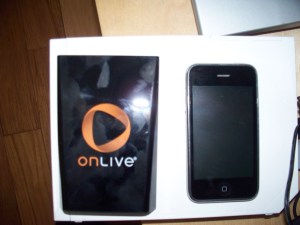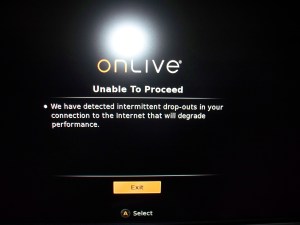On-demand gaming. Remote gaming. Cloud gaming. All those terms refer to an idea that been gaining steam over the last few years. The obsession deals with taking discs and console hardware out of the equation and streaming a real-time video game experience over the internet.
Up until now, cloud computing has been used for decentralized productivity or entertainment applications with low levels of interactivity. With something like, say, Google Docs, there’s a high level of interactivity in terms of the user input (constant typing, for example) but the size of data being place-shifted is so small that the lag is minimal. On the other end of the spectrum, there’s media streaming services like Netflix or Hulu, where the size of the data is big (since it’s video) but the level of interactivity is low. The challenge with gaming, then, is that both interactivity and data size are high. Video games allow for user input that radically changes how the world reacts, and that flexibility demands pretty robust computing power, especially when developers are constantly trying to push the envelope in terms of graphics, simulated physics and artificial intelligence.
The OnLive service, which launched its beta earlier this year, attempts to deliver a gaming experience commensurate with that of a PS3 or Xbox 360 without any additional hardware. The beta was primarily concerned with spreading the service out over Macs and PCs, but the true holy grail has been getting onto the HDTV. With the debut of the MicroConsole, that goal’s in sight. I’ve had a unit for more than a week; read on to see what I think.
(More on TIME.com: Can OnLive Compete in the Video Game Console Wars?)
Price of entry:
99 bucks gets you an OnLive’s MicroConsole Game system bundle, which comes with a gamepad, the MicroConsole itself and an assortment of cables, including the all-important HDMI. (Don’t laugh; we all know some systems gouge you for those cables.) You’ll also get credit for a free game as part of that buy-in. It’s currently cheaper than any other video game system and doesn’t require a monthly subscription fee, either.
Feel:
The MicroConsole hardware itself is slick and compact, housed in a shiny plastic shell with two USB ports up front for charging and connections. The unit is small and unobtrusive. It’s almost as if they want it to disappear. The controller comes with feels solid and well-built. The analog stick aren’t offset as on a Xbox 360 controller but the triggers feel especially springy. There are playback controls for capturing and viewing video on the front of the gamepad, too.
The user interface for the OnLive service tends to feel a little flashy and gimmicky, like the company’s showing off what it can do. The menu pages all have some kind of video streaming and the screen’s chock-a-block with options when you’re not playing a game. Not of that is bad; it just feels a little like they’re trying too hard.
(More on TIME.com: Strong Kinect-ion?: First Impressions of Microsoft’s New Motion-Control Camera)
Responsiveness:
Latency is OnLive’s big challenge. It’s hard to muster up the same kind of patience that you’d have for a slow web browsing experience when you’re trying to play video games. My experience was a mixed bag.
When I could connect, the experience was actually good. There seemed to be an almost imperceptible amount of actual lag. The best way to put it is that it’s barely enough to notice visually, but not enough to affect real-time performance. And your brain eventually acclimates to this in a weird way. At its worst, there was a bit of pop-up but no hitching or freezing.
But I couldn’t always connect.
The mininum broadband requirements on the OnLive website state: “…3 Mbps required, 5+ Mbps recommended for best performance. As a general rule, we recommend 5 Mbps for TVs 40 inches and larger, 4 Mbps for 30-40 inch TVs, and 3 Mbps for smaller.” My speedtests for my home network consistently fell in the 6.00 to 6.85 Mbps range (on a 40-inch HDTV) yet I couldn’t reliably connect to the service. The error message reads, “Unable To Proceed. We have detected intermittent drop-outs in your connection to the internet that will degrade performance.” Your only option is to disconnect and try again. There’s no sign of any kind of dynamic load-balancing on the front end of the experience. You know how certain online experiences will give you status updates on the strength of your connection? There’s none of that with OnLive. Most frustratingly, you’re not even given the option to connect anyway. Even if I wanted to risk going online with hiccups–to maybe get at other elements of the service–you’re not given the chance. Also, no resource exists on the website to let you know if the service is down or not. If you can’t connect, you’re left to the abilities of customer service to help you.



